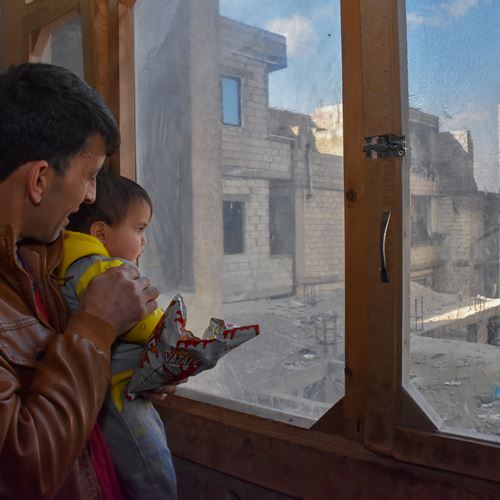News
Protection of Civilians Week: spotlight on Syria
Syria’s 14-year civil war came to an end last year. But displacement, economic crisis, destruction of housing, loss of civil documentation, and deteriorating public infrastructure and services continue to drive widespread protection concerns.

Heavy damage to populated areas and the total absence of habitable homes in entire areas pose a major protection risk to Syrian returnees, IDPs and local communities alike. Many lack legal identity documents and other civil documentation, which creates additional barriers in accessing education, humanitarian assistance, employment, health care, and the ability to move freely or seek legal redress. Infrastructure damage, economic barriers, and insecurity consistently limit service availability and access, particularly for displaced and returnee populations.
DRC’s latest assessment in Syria have identified the following most prevalent protection risks affecting specific groups in Syria today in the Dera’a, Deir Ezzor, Hama, Homs and Idleb governorates.
Protection risks affecting women and girls
Women and girls face a wide range of protection risks, including gender-based violence (GBV), including domestic abuse, and as a result restricted movement and restricted access to services due to sociocultural norms and insecurity. Economic strain, displacement, and weakened family structures have increased women’s vulnerability, while legal and psychosocial support systems remain largely absent or inaccessible. Barriers to civil documentation and housing, land and property rights also hinders women’s access to justice and much needed assistance.
Protection risks affecting men and boys
Men and boys across the assessed governorates face a range of protection risks rooted in insecurity, family violence, psychological distress, and economic hardship. A cross-cutting trend is that mental health issues, exposure to violence, and harmful coping mechanisms—such as drug use or child labor—are widespread, particularly among displaced and economically marginalized households. The lack of safe spaces, male-focused psychosocial support, and structured engagement opportunities has deepened these vulnerabilities.
Protection risks affecting elderly persons and persons with disabilities
Persons with disabilities and older persons face systematic exclusion, heightened vulnerability, and limited access to services across all five governorates. Common challenges include social stigma, lack of specialized services, barriers to mobility and communication, and exposure to abuse or neglect and dependency on able family members who are already struggling. They are also often excluded from community-based protection mechanisms and consultations leading to unaddressed needs and further marginalization.


